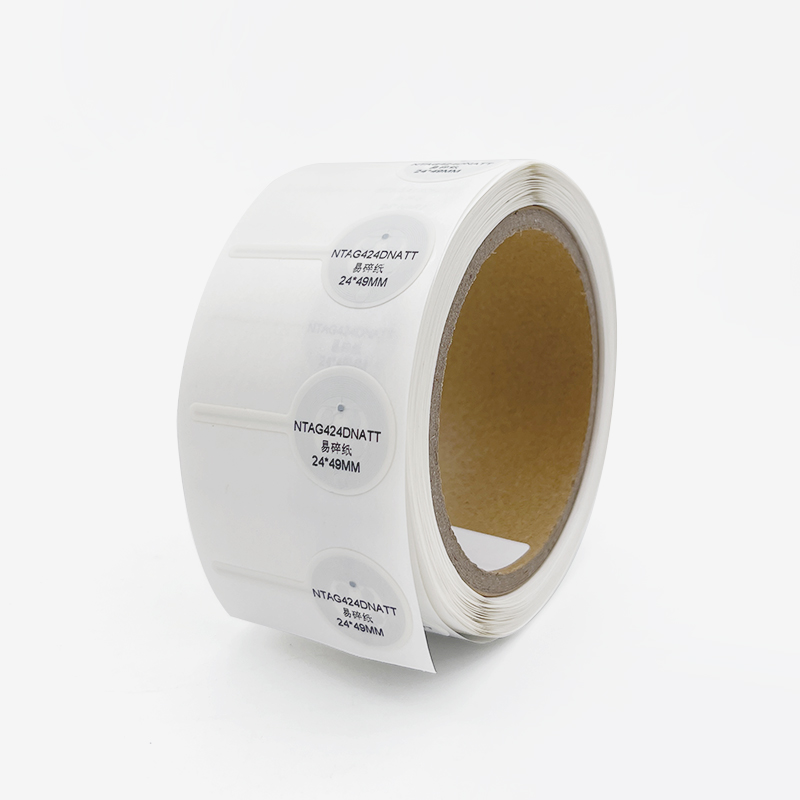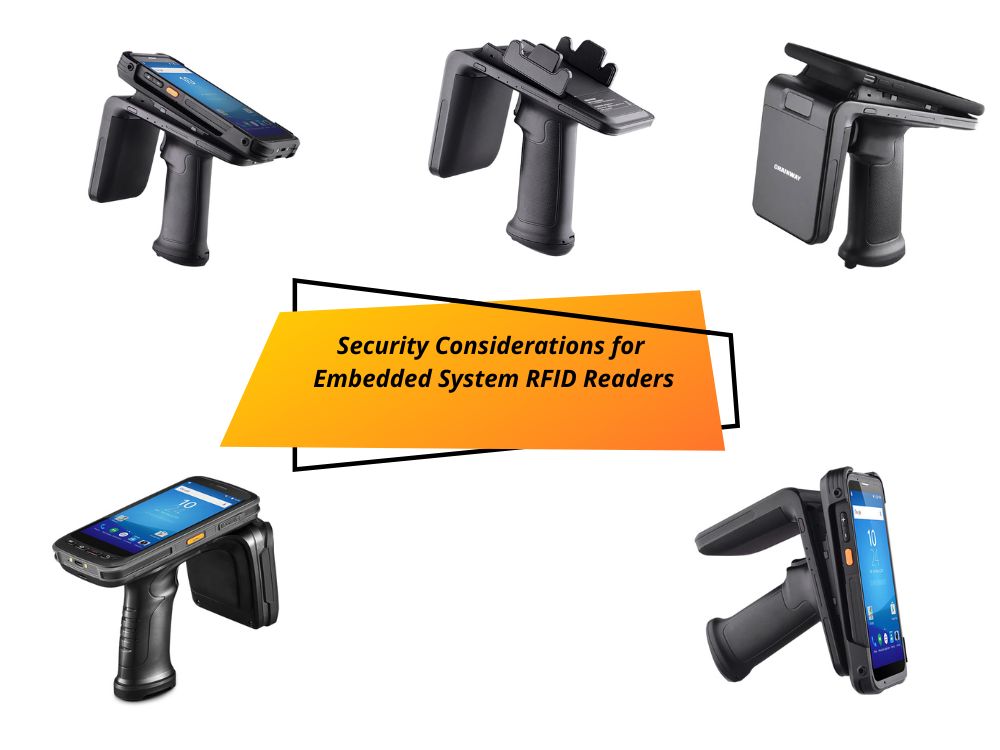
Security Considerations for Embedded System RFID Readers
Table of Contents
Summary
This article, the third installment in our series on embedded RFID readers, delves into the critical security considerations for engineers, solution architects, and product managers.

Overview
As data protection laws tighten and security breaches become more common, selecting RFID readers with robust security features has become crucial. This article explores the essential security aspects to consider when choosing embedded RFID readers, focusing on encryption capabilities, secure data exchange, mutual authentication, and tamper detection technologies.
Key Security Considerations
Encryption Capabilities
Does Your Application Require Encryption Capabilities?
Assessing whether encryption is necessary for your application is the first step in securing RFID data. If encryption is required, determine whether it should be applied to the data transmitted over the air interface or the data exchanged with the host system.
RFID readers must support cryptographic algorithms capable of encrypting and decrypting data segments. Custom key management features should be available to accommodate user-specific cryptographic keys. This can be facilitated through high-level APIs or graphical user interfaces that allow users to input their keys.
Encrypted Data Exchange
Do You Require Encrypted Data Exchange?
Identify if encryption is needed between the RFID media and the reader or between the reader and the host system. For applications handling sensitive personal information, such as biometric data or personal identifiers, both levels of encryption are critical.
Readers should support encryption algorithms like AES, DES, or 3DES and be compatible with standards such as ISO7816. The reader must also offer software capabilities, such as PCSC or CCID modes, and hardware support for secure communication.
Mutual Authentication
Does Your Application Require Mutual Authentication With Secure Access Modules and RFID Media?
Secure Access Modules (SAMs) are essential for applications requiring mutual authentication. These modules protect security keys and facilitate secure communication between RFID media, the reader, and the host system. Readers should support authentication with SAMs and handle cryptographic operations securely.
Communication Interfaces
Does the Card Reader Have Communication Interfaces Other Than Wiegand?
The Wiegand interface, though still in use, is outdated and vulnerable to security risks. Modern RFID readers should support more secure communication interfaces like RS485 or RS232 to enhance data security and encrypted data exchange.

Tamper Detection Technologies
Do You Require Tamper Detection Technologies?
Evaluate if tamper detection is necessary for your application. High-security environments, such as data centers, benefit from tamper detection technologies, including mechanical and optical sensors. For less critical applications, tamper detection may be less essential but still valuable for preventing unauthorized access or damage.
Secure Firmware and Configuration Updates
Do You Require Secure Firmware or Configuration Sharing?
Ensure that the card reader supports secure methods for updating firmware or configuration files. If sensitive information is involved, such as encrypted data or proprietary formats, these files must be encrypted during transmission. This practice secures the update process and prevents unauthorized access to sensitive information.
Conclusion
Selecting an RFID reader with appropriate security features is crucial for protecting sensitive data and accommodating future security needs. Integrators should work with experts to evaluate application requirements and design systems with flexible, secure features. The right RFID reader will support current security standards and adapt to evolving security challenges.
Key Security Features in RFID Readers
Security Feature | Description | Importance |
Encryption Capabilities | Support for cryptographic algorithms like AES, DES, and 3DES. | Essential for protecting data in transit. |
Encrypted Data Exchange | Ability to encrypt data between RFID media, reader, and host system. | Crucial for handling sensitive personal information. |
Mutual Authentication | Support for Secure Access Modules (SAMs) for secure key management and communication. | Important for high-security applications. |
Communication Interfaces | Support for secure interfaces such as RS485 or RS232. | Enhances security beyond outdated Wiegand technology. |
Tamper Detection Technologies | Mechanisms to detect physical tampering, such as mechanical or optical sensors. | Adds protection in high-security environments. |
Secure Firmware and Configuration | Capability to securely update firmware and configuration files, with encryption if necessary. | Ensures secure updates and protects sensitive information. |
Choosing the right RFID reader involves balancing security features with application requirements. By considering the aspects discussed, you can ensure that your RFID solution is both secure and adaptable to future needs.
Comments
Hot Products

RFID in Logistics: How to Eliminate RFID Misrouting and RFID Label Failures
RFID in logistics is more than just a tool to speed up processes. It has become a key part of how modern supply chains operate.

What Is RFID Waste Management
Imagine a city where every trash bin speaks — not literally — but through a tiny chip that tells the system when it’s full, when it’s emptied, and where it went. That’s what RFID waste management is doing today.

What are Bolt Seals and their Applications? | Complete Guide
In global trade and logistics, bolt seals play a crucial role in ensuring cargo security and compliance. These small but powerful devices are designed to lock shipping containers, trailers, and cargo doors with a tamper-evident mechanism.

What is an RFID Card Protector? Benefits, Use Cases, and Buying Guide
RFID technology (Radio Frequency Identification) is everywhere: in your credit cards, ID badges, transit passes, hotel room keys, and more. It offers speed and convenience, but it also opens the door to a new kind of digital theft called “skimming.” That’s where an RFID card protector comes in.

RFID Wristbands for Events: Bulk Buying Guide for Organizers
RFID wristbands for events are becoming the go-to solution for organizers who need faster entry, fraud prevention, and cashless payments at concerts, festivals, and sports venues. Unlike paper tickets or QR codes, these smart wristbands use embedded chips to streamline access, secure transactions, and improve the guest experience.

How RFID Tag on Windscreen Improves Vehicle Access Control and Toll Systems
In today’s fast-paced world, vehicle identification needs to be quick, secure, and contactless. An RFID Tag on the Windscreen provides exactly that — a reliable way to manage toll collection, parking, and gated access without stopping vehicles.
Tags
RELATED BLOGS

RFID in Logistics: How to Eliminate RFID Misrouting and RFID Label Failures
RFID in logistics is more than just a tool to speed up processes. It has become a key part of how modern supply chains operate.

What Is RFID Waste Management
Imagine a city where every trash bin speaks — not literally — but through a tiny chip that tells the system when it’s full, when it’s emptied, and where it went. That’s what RFID waste management is doing today.

What are Bolt Seals and their Applications? | Complete Guide
In global trade and logistics, bolt seals play a crucial role in ensuring cargo security and compliance. These small but powerful devices are designed to lock shipping containers, trailers, and cargo doors with a tamper-evident mechanism.




